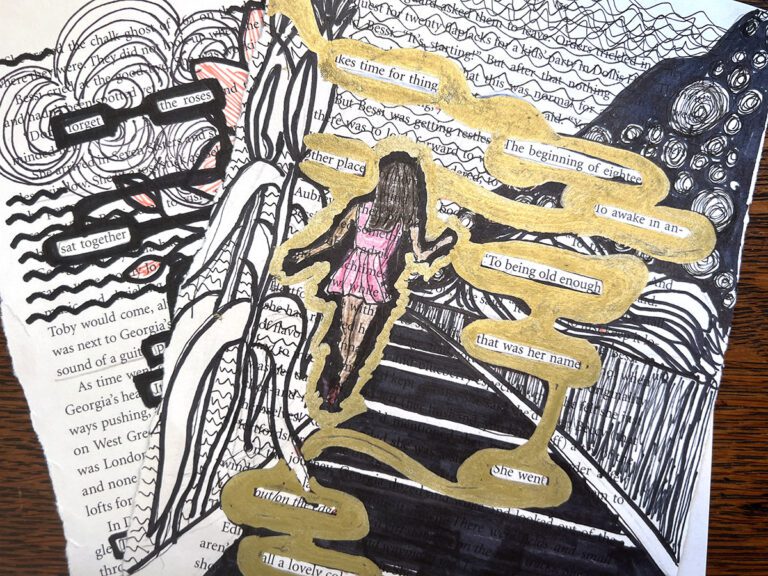
Art and creativity are seen as going hand in hand, but they shouldn’t be. The fact is that many activities that happen in art class involve minimal creative thinking on the part of students. This is a disservice. Not all students who take art classes will go on to work in arts-related fields, but all will need to think creatively in the careers of the future.
Teaching creative thinking is one of the most important things we can do for our children.
To teach creative thinking, teachers have to examine what creativity looks like and intentionally plan for it. Take the following description, for example. Is this an art activity or something else?
When the students walk in the door the supplies are laid out. The teacher carefully takes the children through the steps, one after the other. Following the teacher’s directions, the children make beautiful artwork.
This activity is art-related, in that students are using art supplies to create a product, but is it art? To answer that question, we have to consider the definition of art. The Oxford Dictionary defines art as “The expression or application of human creative skill and imagination.” When the activity above is analyzed through this lens, it’s clear that it lacks the opportunity to apply creativity or imagination. Instead, the students are mainly following directions or assembling. Assembling Activities, like the one described above, are art-related, but they are fundamentally not art in that they leave little room for creativity.
What is Art?
For an activity to be considered art it must involve Creating Behaviors, which are defined as skills or tasks that involve developing students’ abilities to generate original ideas. Teaching for creativity requires intentional planning and direct instruction. To teach creativity, instruction must leave room for students to apply concepts through some level of choice.

Assembling Behaviors are at one end of the teaching creativity spectrum. They ask for students to do things like recall information or replicate teacher examples. At the opposite end of the spectrum are Creating Behaviors, which require students to plan artwork, problem solve, and express meaning. Some pedagogies, like TAB, are designed specifically for teaching creative thinking, but any teaching style can be conducive to creative work.
To include more creativity in your classroom try the following tips.
1. Plan for choice.
Make sure to give students of all ages the opportunity to plan and make decisions. This can be done by using pedagogies like TAB, which I love, or by building in student choice to your current teaching style. Limited choice involves providing a selection of choices for students to pick from instead of deciding for them in advance and is an easy way to modify current lessons. For example, in a project where students are drawing, let them pick from markers, crayons, and colored pencils. This asks them to consider the qualities of the materials, what they personally like best, and what they’ll be most successful using. The ability to plan and make decisions like this is an important creative skill.
2. Include options for response.
When students respond to artwork, consider including multiple options or letting them use their own ideas. If you’re teaching about Van Gogh, have students make observations about the artwork. These will include things like the type of color used, line quality, and repetition. Pose the assignment as a challenge by asking students how they could include similar attributes in their own work. This particular task asks them to combine their own ideas with elements of Van Gogh’s style and is big on creative thinking.
3. Offer Open-ended Tasks
Open-ended tasks are challenging and fun. They also provoke diverse responses from students and really challenge them to think creatively. Challenges like “make artwork about a memory” or “create a project using unconventional materials” ask students to pair their imagination with their knowledge of media and process. If you want to learn more, Tim talks about creating a framework for creative projects in the Creativity Exercises for Every Level PRO Learning Pack.
The Takeaway
Creating Behaviors develop creative thinking skills and are an important part of quality art education. Teachers can teach for creativity by planning open-ended tasks, including options for response, and trying limited choice. These cognitively heavy tasks develop problem-solving skills as well as skills with media and process, plus they teach students to think creatively.
Fired up about this idea? Check out the AOE course Creativity in Crisis where you’ll learn even more strategies to take into your classroom to enhance creativity and cultivate learners who are prepared for the demands of our ever-changing world.
How do you teach for creativity?
Is teaching creativity an important part of your curriculum?
Magazine articles and podcasts are opinions of professional education contributors and do not necessarily represent the position of the Art of Education University (AOEU) or its academic offerings. Contributors use terms in the way they are most often talked about in the scope of their educational experiences.




